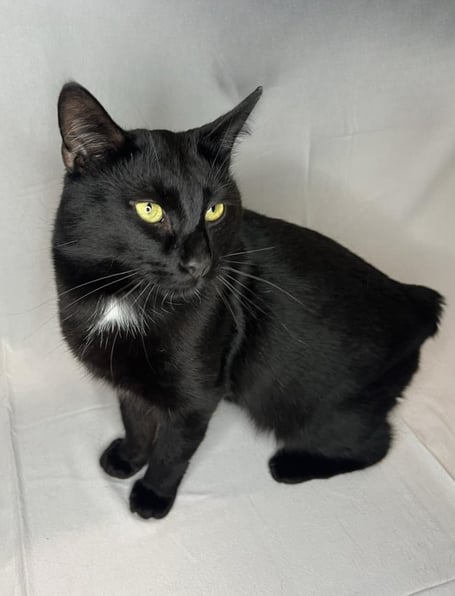Cats are often characterized as being aloof and independent, and even ardent cat-lovers can’t really argue with the saying that ‘with a dog you always know where you stand; with a cat, never’.
All the more surprising, then, that a recent study in America (published in the journal Behavioural Processes) has discovered that cats actually have almost 300 facial expressions, which have possibly evolved as a result of them living alongside human beings for several centuries.
The study involved dozens of cats, living in a rehoming shelter in Los Angeles, that were filmed over several weeks.
When the footage was analysed the researchers logged 26 different facial muscle movements, including blinks, nose licks, nose wrinkles, whisker retractions, lip licks and various ear positions.
A total of 276 combinations of these movements were identified, and the researchers have classed these as facial expressions.
They couldn’t attach a nuanced meaning to all of the combinations, but determined that about 45% were clearly friendly.
Friendly cat expressions tend to involve eyes being closed and ears and whiskers being tilted forwards.
Another 37% of expressions were clearly aggressive or defensive, and involved ears and whiskers being drawn back, constricted pupils and a licking of lips. The remaining 18% of expressions were ambiguous.
The researchers believe that their findings challenge the notion that domestic cats are uncommunicative, and that they have a much greater range of facial expressions than their wild counterparts.
This adaptation is mirrored in the dog world – domesticated dogs have evolved new muscles around their eyes that are not seen in the wolves from which they have descended.
Of course, cats have lots of other non-verbal ways of communicating. A cat’s tail (if they have one) is a great indicator of what kind of mood they’re in: an upright tail is a greeting sign and generally associated with affection; a tail that is curved over a cat’s back is usually a sign of playfulness; and a swishing tail generally indicates that the cat is concentrating on something – a toy or (sadly) a bird.
A cat puffs up their tail when they want to look bigger and scare off a threat, usually another cat or a dog, and a low-hanging tail is a sign of aggression. Purring is usually associated with a contented, happy cat, but that’s not always the case. A cat will also purr when they are feeling agitated, or if they’re in pain, as a way of comforting themselves.
And when it comes to verbal communication adult cats generally don’t meow to, or at, other cats.
Kittens routinely meow to attract the attention of their mother, but stop doing so at about four months of age once they’re weaned. Cats generally only meow to, or at, human beings. Just as their facial expressions have evolved with domestication, meowing is an extension of the mother:kitten relationship to help a cat communicate with humans.
Handsome young Kong came to us as a stray from central Douglas, and so he needs his new home to be away from that area.
He is a Manx cat, and so he can’t rely on his tail to communicate how he’s feeling, but he is expressive in other ways. He’s very playful and affectionate, and full of character; but he can become ‘over stimulated’ and overwhelmed, and then he needs to be given space to be able to de-compress.
Kong’s new owner will need to be tuned into his body language, and be able to pick up on his queues and signals.
He’ll need to adjust to his new home in his own way, and be given lots of time to settle into a strange environment. In return, he will undoubtedly become the most devoted feline companion anyone could wish for...but on his terms.

.jpeg?width=209&height=140&crop=209:145,smart&quality=75)


-(1).JPG?width=209&height=140&crop=209:145,smart&quality=75)
Comments
This article has no comments yet. Be the first to leave a comment.